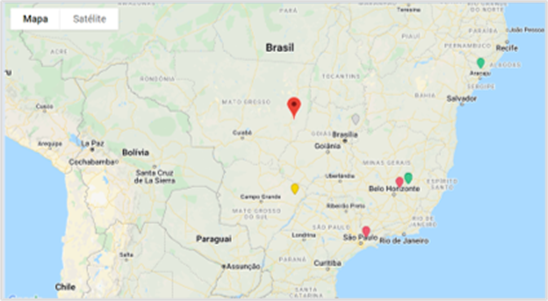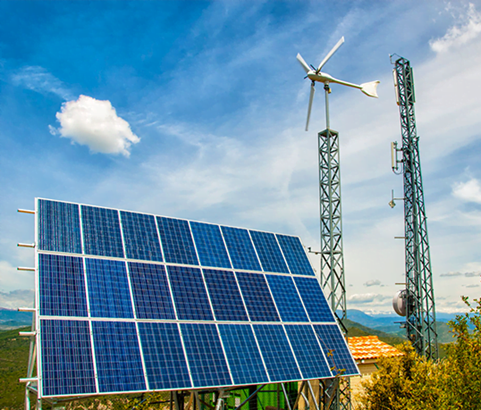- August 23, 2022
5 effective ways to automate telecom towers in 2022
In the first half of 2022, large telecom infrastructure companies are witnessing strong growth, increasing their revenues, meeting their targets with new acquisitions, and releasing new services to complement the growing demand for 5G.
To sustain this growth the need for digitization and automation of the towers to make them more efficient is on every manager’s agenda. How can towers be operated remotely? How can assets be tracked in real-time? And how to make it for a lower OPEX than the competition? How can they provide more value for the tenants? How can they position their towers ahead of the industry?
One possible answer is to step into the challenging waters of automation. Automation is the promise that should allow TowerCos and MNOs to focus on their core business ventures, outsource the management of cost-intensive assets, and raise financial muscle.
There is a growing number of automation technologies and solutions pushing to gain awareness in the market, in this post we will cover what we consider the 5 most effective and mature ways to automate telecom towers in 2022.
1. Digital Twin created by autonomous drone inspection
Automation tools and Digital Twin technology are becoming an industry standard. An autonomous, versatile, and scalable platform provide a cost-effective way for TowerCos to roll out a digitization program across their whole asset portfolio that benefits an entire organization.
Some of the benefits to roll out a Digital Twin platform with autonomous drones:
- Better capture revenue by understanding exactly what’s on the tower and ensuring that those billing data records are correct.
- Create new revenue opportunities by identifying what’s not on the tower and sharing with third parties to try to increase the tenancy ratios which are so important to TowerCos today.
- Reduce field operational costs by reducing the number of truck rolls to each site and streamlining those operations by introducing the drones into the workflows.
- Provide consistent data and faster insights. It doesn’t matter if the drone flight is in Finland or Guatemala, it will fly in the same manner providing consistent data within a matter of hours.
- Faster approval of new sites by sending a drone up in a short flight capturing a 360 visualization of the tower which can then be shared with third parties to understand how that site will look and increase the speed to get the approvals.
- Improve employee safety by reducing the need for climbers to scale these structures.
2. Structure Calculation Design and Analysis
Nowadays more and more tower infrastructures are carved out as separate companies, and civil engineering design and analysis become key in any of the new companies’ business activities.
This process used to be very slow, repetitive, time-consuming, and error-prone because of the amount of data they must review, like assessing wind, exposure, and terrain data. Also, it’s worth mentioning that better coverage and reduce raw materials are key to succeeding with any of the UN sustainable development goals.
The concept of the design and analysis of a structure for towercos can answer their customer request instantly so that they can:
- Roll out new towers by facilitating new design standardization and optimizing structural engineering.
- Co-locate and identify the rest capacity of the structure to accommodate additional antenna load.
- Upgrade 5G antennas.
- M&A by removing the complexity by providing instant due-diligence assessment.
3. Tower Monitoring with IoT
What’s a “smart tower” or a “digitized tower”? How can we deploy and monitor a tower with IoT (Internet of Things)?
A “smart tower” or a “digitized tower” is an asset that can increase revenue and reduce operational costs as well as bring multiple benefits to both tower companies and the customers of those towers. A digitized tower allows you to monitor the tower in real-time and respond to incidents that may occur and act, saving costs and increasing profits. In addition, this monitoring also brings a very important value for this type of company, the safety, and security of both assets and workers.
How can this tower be monitored and what kind of parameters can be measured? By installing and deploying sensors in all crucial parts of the tower, such as, for example:
- Weather conditions: wind speed, humidity, air quality, barometric pressure, etc.
- Site monitoring: fire, flooding, corrosion, noise, etc.
- Tower Structure Behavior: Deflection, twist, and bending of the tower.
- Presence or burglary detection of valuable assets.
- Access Control: Door opening.
- Energy Metering: pulse meter/energy meter and fuel tank level.
- Renewable Energy Generation: Wind speed, solar radiation, and battery recharge.
These sensors are configured according to certain parameters and criticality according to their typology or according to the location where they are located, categorizing then alarm levels that can also be visualized on a map, making an automatic update of the status, and triggering a series of corrective improvement actions. This also allows for tracking preventive maintenance actions.

4. Energy Management System to better balance the grid
Improving the energy efficiency of towers and reducing energy consumption is one of the biggest challenges facing telecommunications companies today. Knowing in real-time the status of the tower’s energy consumption can help its performance and predict future behavior, as well as significantly reduce costs and undertake a business strategy to save energy and reduce the carbon footprint.
There are two cases where energy monitoring is interesting:
- Outages. Get immediate notifications when there is a power outage and when it returns to normal, having immediate visibility of the impact of the outage.
- Multiple power sources. When there are multiple power sources within individual facilities, the power usage can become a task very difficult to manage. If a telecommunications operator is managing thousands of tower installations, this problem may be bigger. Have an energy storage system that can be programmed to charge or discharge the batteries when there is an excess of renewable energy or from prices at peak and off-peak hours and thus better balance the network grid.
5. Renewable Energy to Greening the Network
The network is evolving at a very fast pace driven by demanding consumers with high expectations. Telecom Companies are looking to create a resilient and healthy business model where they are in control of their cell site power to meet government energy targets, reduce their overall carbon footprint and curb dependence on diesel by being independent of the fluctuations in the fuel prices or electricity prices.
Do you know that the telecoms tower industry spends over $19 billion on diesel fuel per year due to the 1,5 million towers in bad or off-grid locations? Bringing alternative sources of energy to the Telecom industry is introducing:
- Wind turbines
- Solar PV panels
- Battery storage
A diversified energy portfolio on a telecom site will reduce the risk of a power outage, correct intermittent energy in bad or off-grid systems and control OPEX costs.

Join the Alliance
Being a member of the Tower Automation Alliance is joining a community of companies, innovators, and experts that are working together towards achieving the full digital transformation of telecom infrastructure.
The TAA gives you the possibility to expand your network of contacts and connect with the ecosystem of players that are playing a key role in defining the future of the industry.
Source: Atrebo, Everynet, Shapemaker, Ubiik, vHive.



